Related Research Articles

Vegetable oils, or vegetable fats, are oils extracted from seeds or from other parts of fruits. Like animal fats, vegetable fats are mixtures of triglycerides. Soybean oil, grape seed oil, and cocoa butter are examples of fats from seeds. Olive oil, palm oil, and rice bran oil are examples of fats from other parts of fruits. In common usage, vegetable oil may refer exclusively to vegetable fats which are liquid at room temperature. Vegetable oils are usually edible; non-edible oils derived mainly from petroleum are termed mineral oils. Vegetable oil sold in the U.S. is normally synonymous with soybean oil.

Coconut oil is an edible oil derived from the wick, meat, and milk of the coconut palm fruit. Coconut oil is a white solid fat, melting at warmer room temperatures of around 25 °C (78 °F), in warmer climates during the summer months it is a clear thin liquid oil. Unrefined varieties have a distinct coconut aroma. It is used as a food oil, and in industrial applications for cosmetics and detergent production. Due to its high levels of saturated fat, numerous health authorities recommend limiting its consumption as a food.
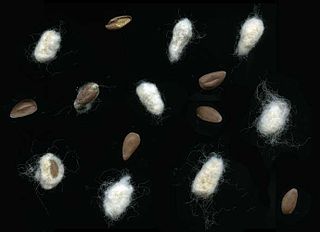
Cottonseed oil is cooking oil from the seeds of cotton plants of various species, mainly Gossypium hirsutum and Gossypium herbaceum, that are grown for cotton fiber, animal feed, and oil.
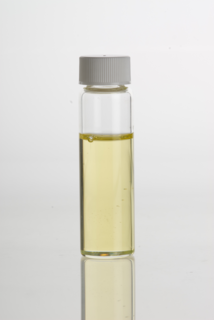
Sesame oil is an edible vegetable oil derived from sesame seeds. Besides being used as a cooking oil, it is used as a flavor enhancer in many cuisines, having a distinctive nutty aroma and taste. The oil is one of the earliest-known crop-based oils. Worldwide mass modern production is limited due to the inefficient manual harvesting process required to extract the oil. Sesame, in the Akkadian language and in Tamil it is called Ell (எள்). and chamke(참깨) in korean.
Walnut oil is oil extracted from walnuts, Juglans regia. The oil contains polyunsaturated fatty acids, monounsaturated fatty acids, and saturated fats.
Palm kernel oil is an edible plant oil derived from the kernel of the oil palm Elaeis guineensis. It should not be confused with the other two edible oils derived from palm fruits: palm oil, extracted from the pulp of the oil palm fruit, and coconut oil, extracted from the kernel of the coconut.
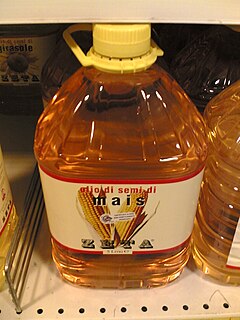
Corn oil is oil extracted from the germ of corn (maize). Its main use is in cooking, where its high smoke point makes refined corn oil a valuable frying oil. It is also a key ingredient in some margarines. Corn oil is generally less expensive than most other types of vegetable oils.

Soybean oil is a vegetable oil extracted from the seeds of the soybean. It is one of the most widely consumed cooking oils and the second most consumed vegetable oil. As a drying oil, processed soybean oil is also used as a base for printing inks and oil paints.

Sunflower oil is the non-volatile oil pressed from the seeds of sunflower. Sunflower oil is commonly used in food as a frying oil, and in cosmetic formulations as an emollient.
Candlenut oil or kukui nut oil is extracted from the nut of Aleurites moluccanus, the candlenut or kuku'i.
Mango oil, mango kernel fat, or mango butter, is an oil fraction obtained during the processing of mango butter. Mango oil is a seed oil extracted from the stone of the mango, the fruit of the Mangifera indica tree. The oil is semi-solid at room temperatures, but melts on contact with warm skin, making it appealing for baby creams, suncare balms, hair products, and other moisturizing products. The oil is a soft yellow color with a melting point of 32–42 °C (90–108 °F).
Stillingia oil is an oil extracted from the seeds of plants of the Triadica genus such as Triadica sebifera and Triadica cochinchinensis. It is a drying oil used in paints and varnishes, and it is believed to be toxic in China. It must be distinguished from stillingia tallow, a fatty substance that surround the seeds in the fruit and must be removed before extracting the oil.

Vateria indica, the white dammar, is a species of tree in the family Dipterocarpaceae. It is endemic to the Western Ghats mountains in India. It is threatened by habitat loss. It is a large canopy or emergent tree frequent in tropical wet evergreen forests of the low and mid-elevations.
Olive pomace oil is olive oil that is extracted from olive pulp after the first press. Once the mechanical oil extraction of olive oil is complete, approximately 5–8% of the oil remains in the pulp, which then needs to be extracted with the help of solvents, an industrial technique used in the production of most other edible oils including canola, peanut, and sunflower. Although the oil extracted in this manner is still olive oil, at retail it may not simply be called "olive oil". This is because the International Olive Council defines olive oil as "the oil obtained solely from the fruit of the olive tree, to the exclusion of oils obtained using solvents or re-esterification processes".

Tomato seed oil is a vegetable oil extracted from the seeds of tomatoes.

Shorea robusta seed oil is an edible oil extracted from the seeds of Shorea robusta. Shorea robusta is known as the Sal tree in India. Sal is indigenous to India and occurs in two main regions separated by the Gangetic Plain, namely the northern and central Indian regions. The plant belongs to the Dipterocarpaceae botanical family.
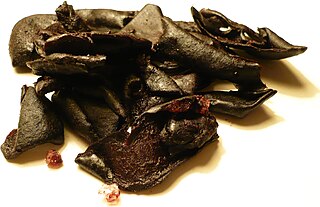
Kokum oil is a seed oil derived from the seeds of the kokum tree. Kokum oil is edible and can also be used for things other than cooking.
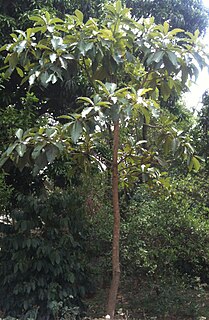
Phulwara oil is extracted from seeds of Phulwara tree. Phulwara Trees are also known locally as Chiuri Trees, Kaeleb Trees, or Butter Nut Trees. Refined Phulwara Oil is marketed as Phulwara Ghee.

Cooking oil is plant, animal, or synthetic fat used in frying, baking, and other types of cooking. It is also used in food preparation and flavoring not involving heat, such as salad dressings and bread dippings like bread dips, and may be called edible oil.
References
- ↑ "Plant Details". Envis.frlht.org. Retrieved 21 November 2013.
- 1 2 SEA Hand Book-2009.By The Solvent Extractors' Association of India.page No:911
- ↑ "Fatty Acid Composition Of Some Major Oils". Chempro.in. Retrieved 21 November 2013.
- ↑ "IS 8879 (1980): Dhupa Fat (FAD 13: Oils and Oilseeds)" (PDF). Law.resource.org. Retrieved 21 November 2013.
- ↑ "Welcome to Manorama Group". Manoramagroup.co.in. Retrieved 21 November 2013.
- ↑ "Welcome to Pilikula Nisarga Dhama". Pilikula.com. Retrieved 21 November 2013.